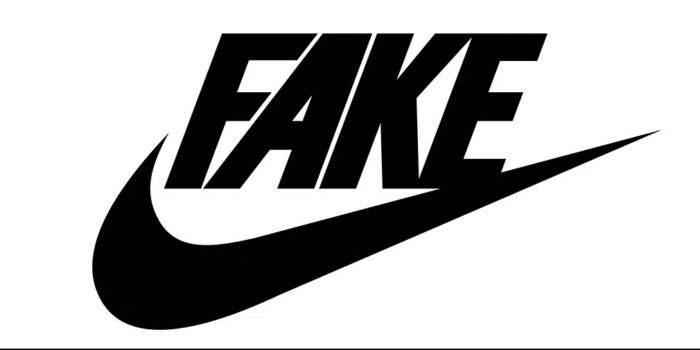A trademark is a symbol that identifies a company’s goods and services from other companies. You could face legal action if you unintentionally infringe on another company’s trademark rights. It’s crucial to know if you have a defense against trademark infringement in this situation. This article will go over a few possible trademark infringement defenses.
What is the Infringement of a Trade Mark?

If a person uses a trademark that is identical or deceptively similar to one already registered on the trademark register, they have infringed another’s trademark rights. Additionally, the individual must use the trademark in connection with comparable products and services to those for which the registered trademark is registered.
For instance, if another mobile company applies an apple picture as their logo on their phone, they may infringe on the trademark rights of the current mobile company, Apple.
Defenses available to Trademark Infringement:
The following are possible defenses against trademark infringement:
1. Fair Use
Fair Use is one of the trademark infringement defenses accessible.
The classic fair use defense involves the lawful use of a trademark for its primary (descriptive) meaning rather than its secondary meaning.
2. Nominative fair Use
The nominative fair use argument safeguards your right to allude to a trademark owner or its products or services in reporting, commentary, criticism, and parody, as well as competitive advertising. Courts impose three conditions on defendants seeking to use the nominative fair use defense:
(1) The trademark holder, product, or service in issue must be difficult to identify without the use of the trademark;
(2) The defendant may only use as much of the mark as is required to identify the trademark owner, goods, or service; and
(3) The defendant shall not do anything that suggests sponsorship or support by the owner of the brand.
3. Descriptive fair Use

It is a circumstance in which a mark has been used in good faith, mainly for descriptive purposes rather than to refer to a particular mark or product.
Descriptive Fair Use allows the Use of another’s trademark to describe the user’s goods or services rather than as a trademark to signify the source of the items or services.
The PIN mark in Pinterest Inc v Pintrips Inc. is an example of descriptive trademark fair use. The Court ruled that Pintrips’ Use of the PINTRIPS and PIN marks did not infringe on Pinterest’s registered trademarks PIN and PINTEREST since the defendant’s Use of the PIN mark was descriptive of a function of the service, namely the capacity to pin places on a map, rather than as a mark. The Court went on to say that the availability of other terms for the word “pin” for marking places on a map did not make the defendant’s Use of the mark any less descriptive.
4. Prior Use
Even if the following user registers the trademark, the earlier user’s rights will prevail. It enables a defendant to use this defense if they have been using the mark for a more extended period than the registered user and have established a reputation in the relevant trade.
Receipt of “Prior Use” entails the following:
(1) A third party’s use of a mark identical to or nearly identical to the registered mark must be concerning the goods and services for which the registered mark is registered;
(2) the Use must be continuous;
(3) the trademark must be used by the proprietor to obtain protection; and
(4) the mark must have been used before using the registered trademark or the date of registration, whichever is earlier.
The UAE Trademark Law does not provide direct rights to prior trademark use. However, we may draw a parallel by examining Article 44 of the UAE Trademark Law, which indirectly preserves the previous user’s rights. It states that the first user has a priority right to register his mark. Thus, the initial Use of the trademark, the date on which it began, its continuity, the prevailing conditions, and the occurrence of the mark registration all constitute essential elements of prior Use of the mark.
UAE Courts’ Interpretation of the Doctrine of Prior Use

Several times, the UAE Courts have upheld the rights of the earlier user of a trademark by issuing substantial judgments. Additionally, the UAE courts have adopted a more permissive approach to the idea of “previous usage” in a significant number of cases. As can be seen, the courts have authorized a previous user of a trademark to assert ownership rights against another party’s registration of the trademark, providing the prior user can demonstrate ongoing Use of the trademark before the other party seeking registration.
UAE courts have cited three essential reasons for their judgment on disputed trademark ownership. They include the following:
1. Ownership must be established via the Use of a trademark.
The Dubai Court of Cassation stated in Petition No. 260/2003 that the right of ownership of a trademark might be established by using the mark, not merely through registration. Another judgment decided by the Dubai Court of Cassation, Commercial Appeal No. 397 of 2019 (dated 09 July 2019), concluded that trademark registration does not exclude someone from demonstrating earlier Use of the brand.
2. Prior Use is required for a trademark only used in the UAE.
In Commercial Appeal No. 200 of 2008 (dated 23 December 2008), the Dubai Court of Cassation held that the registration of a trademark in another country would not be considered for determining “prior usage.” To allow the Courts to determine ownership, the “previous usage” must have taken place in the United Arab Emirates and not in another country.
3. The Registered Proprietor’s Lack of Use of the Mark:
Unused trademarks offer no commercial value and obstruct the registration of new marks. If a registered owner cannot utilize a mark for an extended period, this may be a viable defense. Trademark Federal legislation number 37 of 1992, as amended by Federal Law number 8 of 2002, provides a legislative basis for disputing parties to request the cancellation of a trademark under Article 22 if it is shown that the trademark has been inactive for five consecutive years. It is not relevant if the trademark owner proves that the mark’s inability to use is due to circumstances beyond his control, such as import limitations and enforced governmental constraints.
The Dubai Court of Cassation affirmed in Commercial Appeal No. 268 of 2008 (dated 09 June 2009) that a trademark’s ownership could not be questioned or claimed under the law if it was registered legally and used by its owner for five consecutive years.
The purpose of this article is to provide an overview of the subject. For your situation, you can contact us. Far consultant Middle East provides all services relating to trademark enforcement to our valued clients. trademark attorney has wide-ranging expertise in filing cases relating to trademark infringement. professionally experienced trademark representatives have clear and realistic solutions for protecting your intellectual property and can assist you in:
- Bringing an action for trademark infringement by drafting cease and desist letters or legal notice in advance of the lawsuit.
- Answering any questions about the validity and infringement of third-party trademarks.
- Resolving your dispute with the other party amicably and out of Court.












